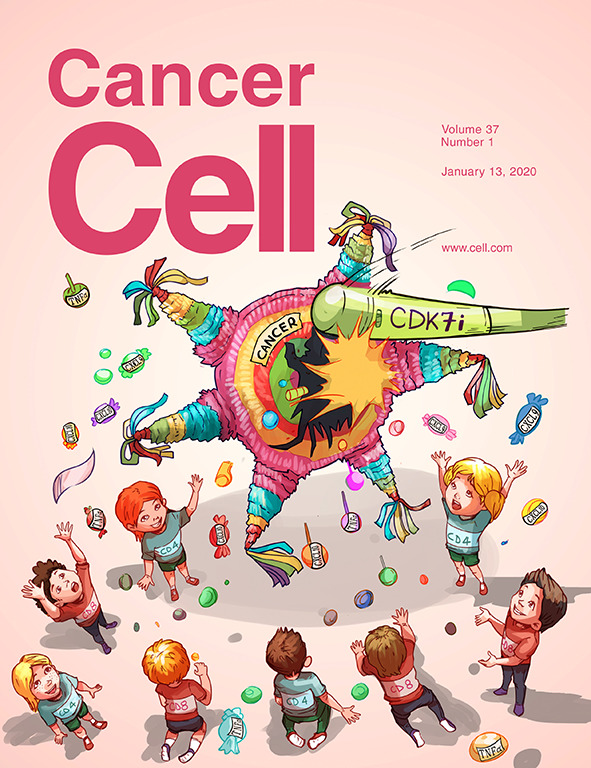基于基底腔肿瘤细胞和肿瘤空间结构的乳腺癌分层系统
IF 44.5
1区 医学
Q1 CELL BIOLOGY
引用次数: 0
摘要
快速复发在三阴性乳腺癌(TNBC)中很常见。为了更好地了解复发的驱动因素,我们使用成像细胞术来表征215名TNBC患者的肿瘤表型景观。我们观察到11种肿瘤细胞表型具有高度的肿瘤间异质性,每种肿瘤细胞表型在个体患者中占主导地位,并鉴定出具有降低基底管谱系保真度和茎样性状的肿瘤细胞表型与快速疾病复发相关。肿瘤- cd8 + T细胞相互作用评分可识别炎症性肿瘤和高HLADR表达的患者。我们将这些特征结合在8个队列中3737名患者的多组学分析中,通过肿瘤细胞角蛋白表达谱和CD8+ T细胞空间模式来区分5种预后乳腺癌亚型。这种分层方案具有直接的临床意义:炎症性肿瘤预后良好,免疫治疗应答率高,而基底管肿瘤细胞为主的患者预后较差。本文章由计算机程序翻译,如有差异,请以英文原文为准。

A stratification system for breast cancer based on basoluminal tumor cells and spatial tumor architecture
Rapid recurrence is common in triple-negative breast cancer (TNBC). To better understand drivers of recurrence, we use imaging mass cytometry to characterize the tumor phenotype landscapes of 215 TNBC patients. We observe high intertumor heterogeneity with eleven tumor cell phenotypes, each of which dominates in an individual patient, and identify a tumor cell phenotype with reduced basoluminal lineage fidelity and stem-like traits that is correlated with rapid disease recurrence. Scoring of tumor-CD8+ T cell interactions identifies patients with inflamed tumors and high HLADR expression. We combine these features in multi-omics analyses of 8 cohorts with 3737 patients across all molecular subtypes to propose five prognostic breast cancer subtypes distinguished by tumor cytokeratin expression profiles and CD8+ T cell spatial patterns. This stratification scheme has direct clinical implications: inflamed tumors show good prognosis and high immunotherapy response rates, whereas patients dominated by basoluminal tumor cells have poor prognosis.
求助全文
通过发布文献求助,成功后即可免费获取论文全文。
去求助
来源期刊

Cancer Cell
医学-肿瘤学
CiteScore
55.20
自引率
1.20%
发文量
179
审稿时长
4-8 weeks
期刊介绍:
Cancer Cell is a journal that focuses on promoting major advances in cancer research and oncology. The primary criteria for considering manuscripts are as follows:
Major advances: Manuscripts should provide significant advancements in answering important questions related to naturally occurring cancers.
Translational research: The journal welcomes translational research, which involves the application of basic scientific findings to human health and clinical practice.
Clinical investigations: Cancer Cell is interested in publishing clinical investigations that contribute to establishing new paradigms in the treatment, diagnosis, or prevention of cancers.
Insights into cancer biology: The journal values clinical investigations that provide important insights into cancer biology beyond what has been revealed by preclinical studies.
Mechanism-based proof-of-principle studies: Cancer Cell encourages the publication of mechanism-based proof-of-principle clinical studies, which demonstrate the feasibility of a specific therapeutic approach or diagnostic test.
 求助内容:
求助内容: 应助结果提醒方式:
应助结果提醒方式:


